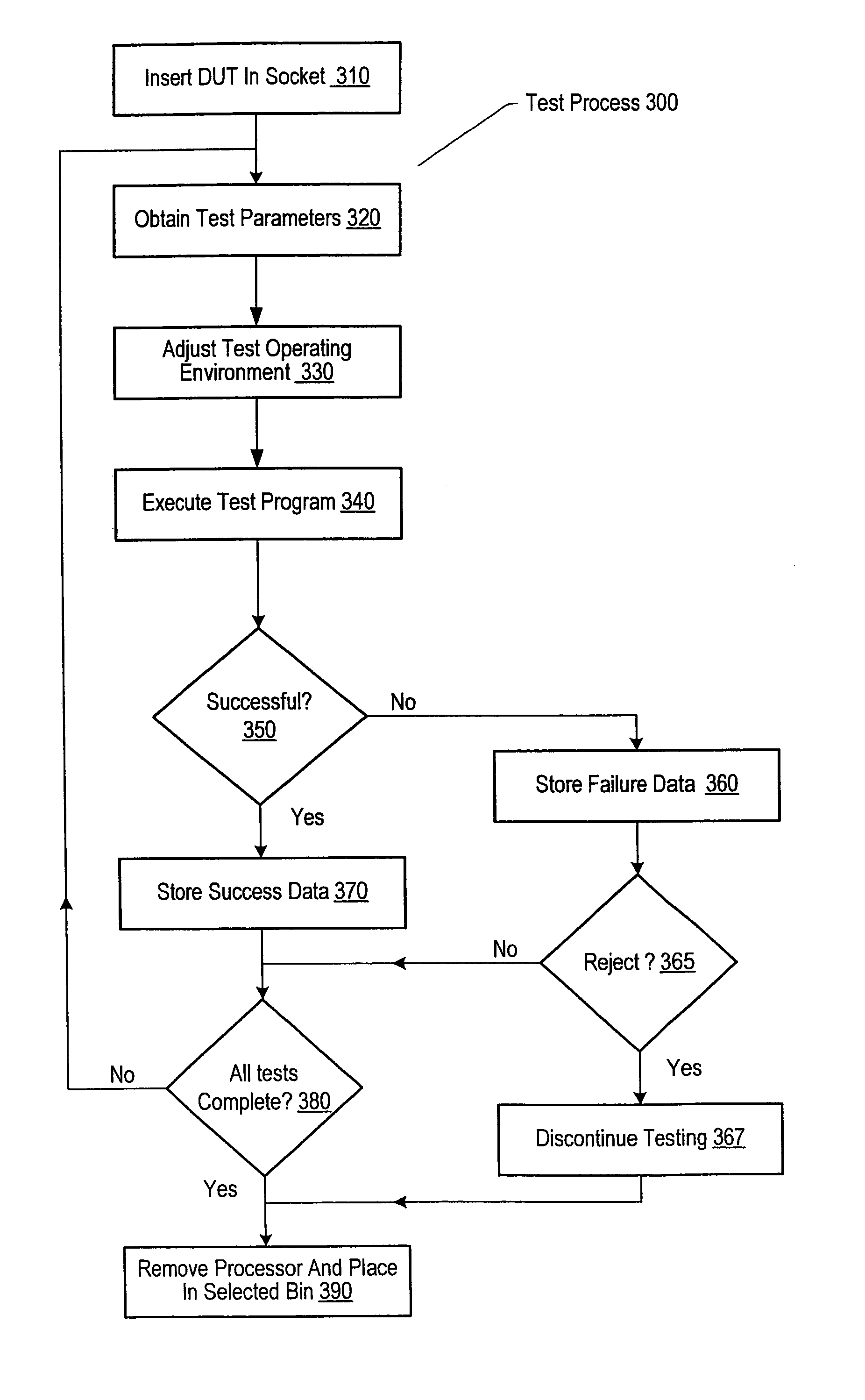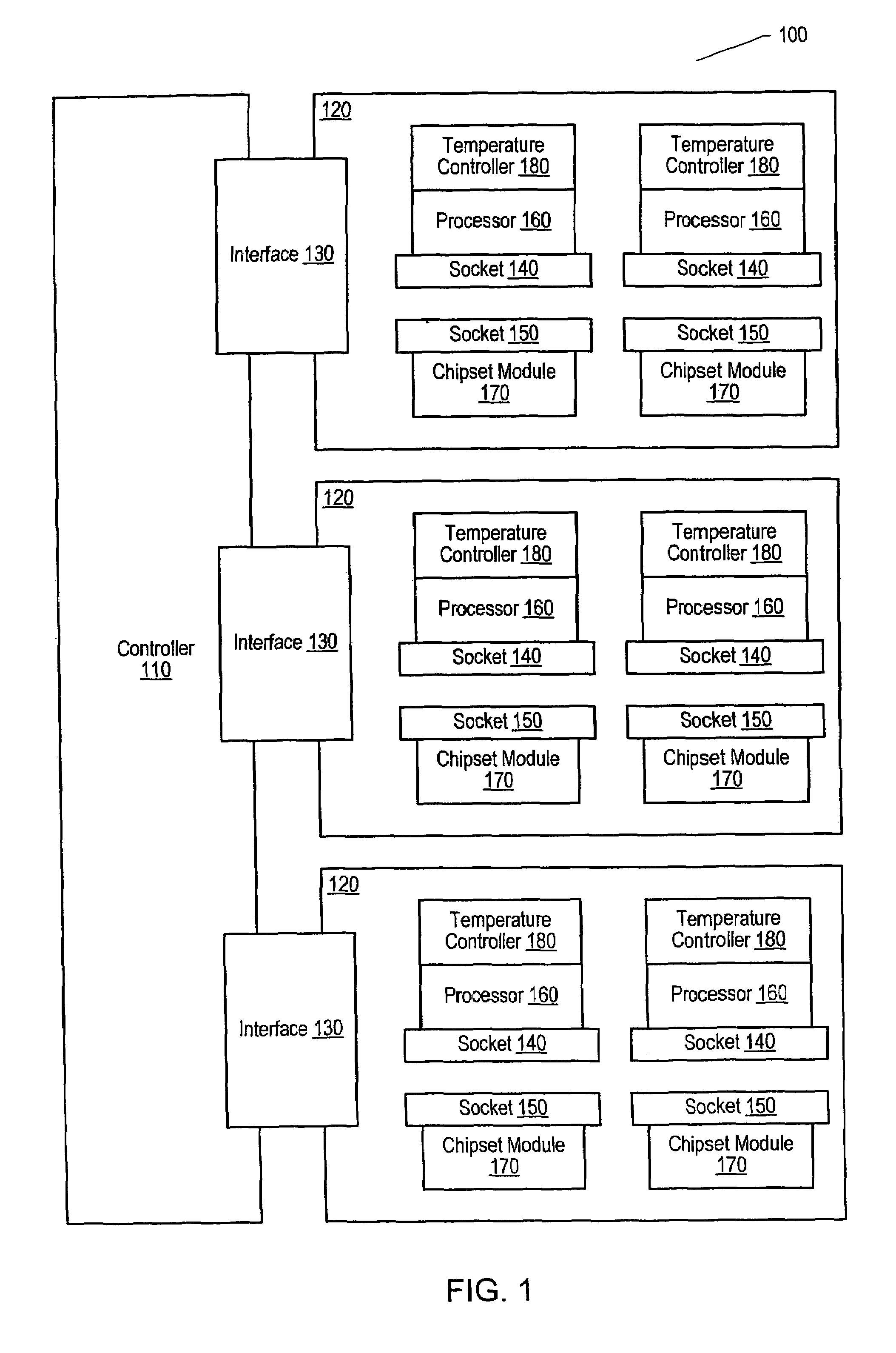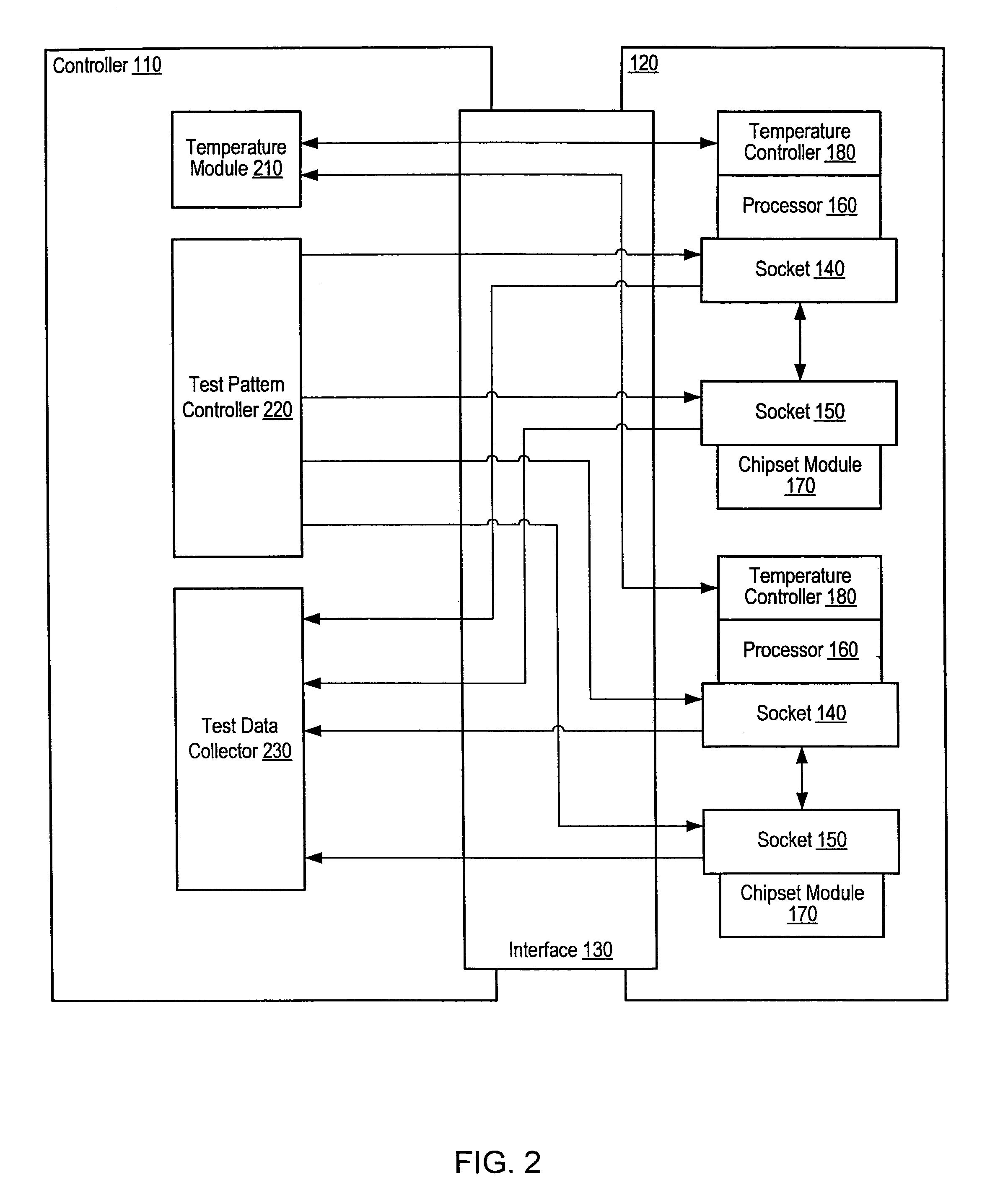Burn-in using system-level test hardware
- Summary
- Abstract
- Description
- Claims
- Application Information
AI Technical Summary
Benefits of technology
Problems solved by technology
Method used
Image
Examples
Embodiment Construction
[0016]FIG. 1 illustrates one embodiment of a test system 100 for performing both burn-in and system-level testing. In the illustrated embodiment, a controller 110 is coupled to three device modules 120 via interfaces 130. As shown, each device module 120 includes two sockets 140 and two sockets 150. Socket 140 couples a DUT 160 to device module 120. Socket 150 couples a chipset module 170 to device module 120. DUT 160 is further coupled to a Temperature Controller 180. The number of DUTs 160 and chipset modules 170 that may be coupled to a device module 120 may vary from embodiment to embodiment, depending on physical packaging constraints and the number of simultaneous tests that are desired. Regardless of the number of DUTs 160 on a device module 120, in these embodiments each DUT 160 may be associated with an individual chipset module 170 and an individual temperature controller 180. In addition, in other embodiments, controller 110 may be coupled to more than or less than three ...
PUM
 Login to View More
Login to View More Abstract
Description
Claims
Application Information
 Login to View More
Login to View More - R&D
- Intellectual Property
- Life Sciences
- Materials
- Tech Scout
- Unparalleled Data Quality
- Higher Quality Content
- 60% Fewer Hallucinations
Browse by: Latest US Patents, China's latest patents, Technical Efficacy Thesaurus, Application Domain, Technology Topic, Popular Technical Reports.
© 2025 PatSnap. All rights reserved.Legal|Privacy policy|Modern Slavery Act Transparency Statement|Sitemap|About US| Contact US: help@patsnap.com



